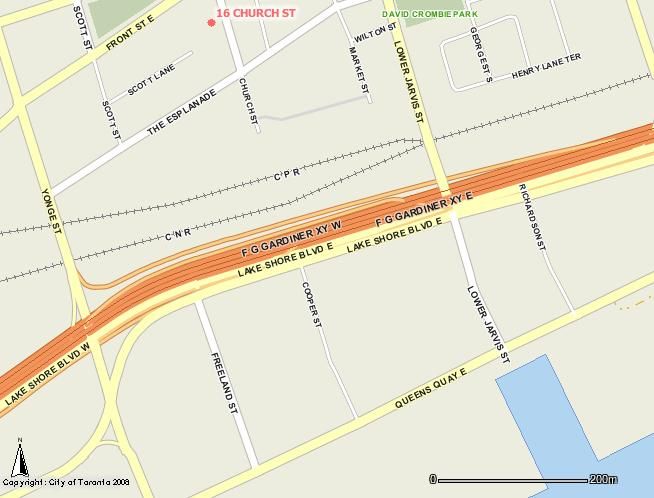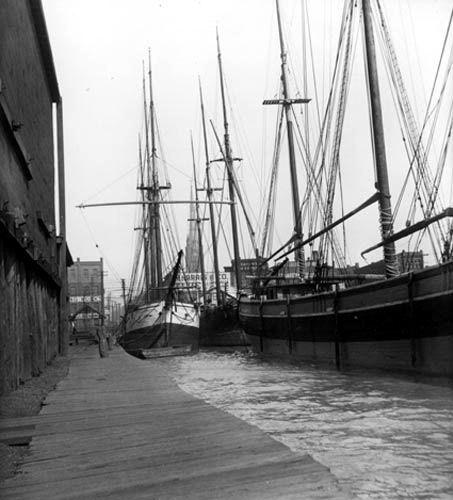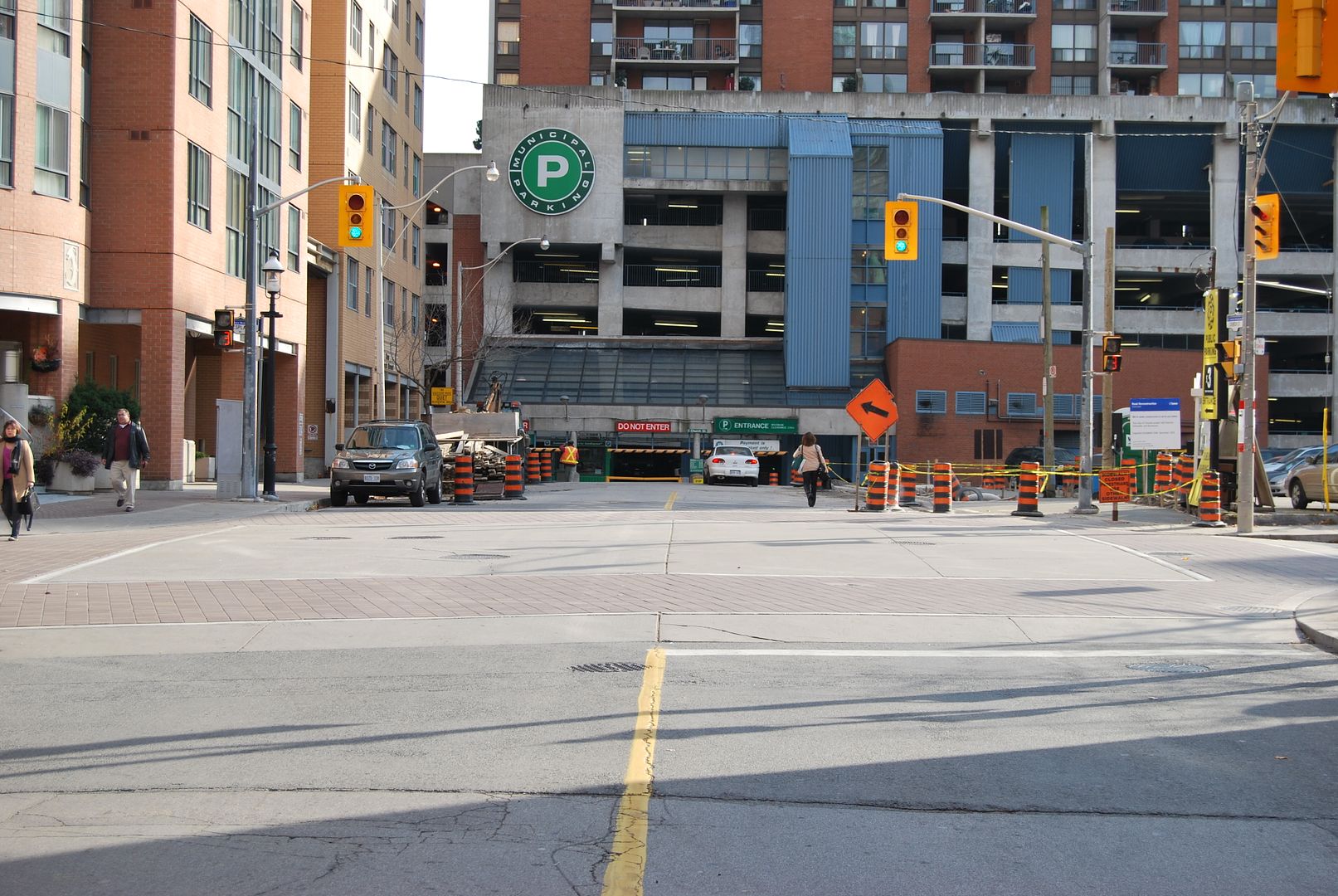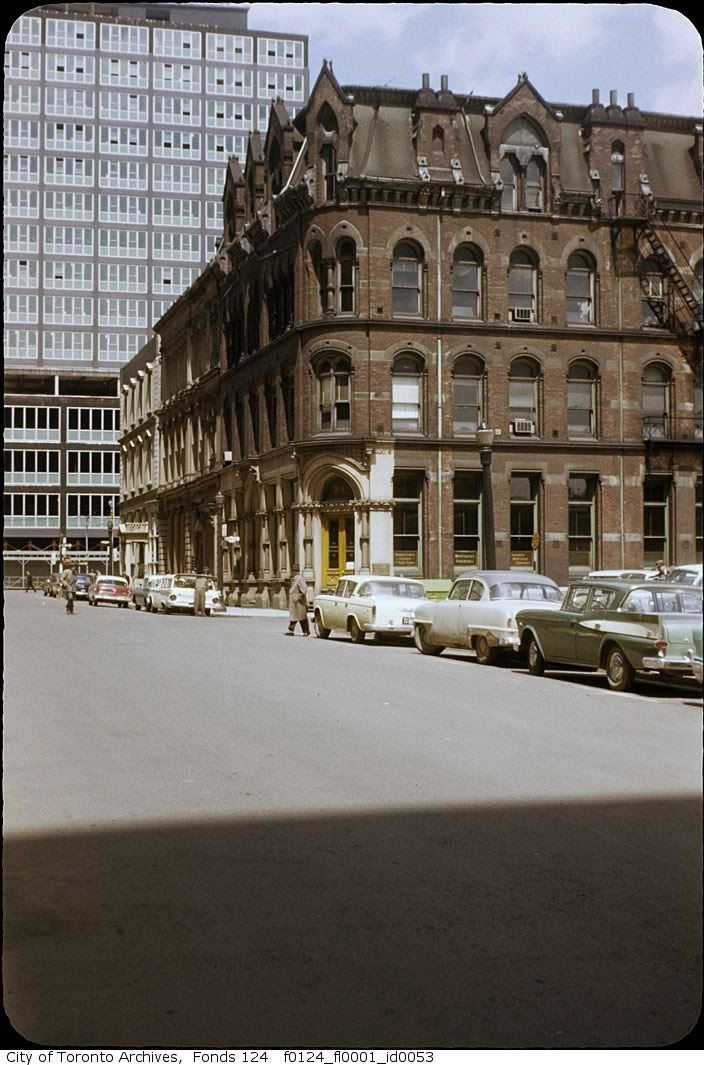November 11 addition.
Then: King looking W across Spadina. No date on the original photograph. The photographer; Alexander W. Galbraith, is biographied in the online Toronto archives:
"Alexander W. Galbraith became one of Toronto's most prominent commercial photographers around the turn-of-the-century. Born on April 1, 1867, Galbraith was the son of Scottish immigrant parents, who were tenant farmers in Scarborough Township at the time of his birth. After spending much of his youth in Manitoba, Galbraith returned to Ontario in 1896 and found employment in Toronto as a manufacturer's agent. A keen amateur photographer, Galbraith changed careers ca. 1898 by going to work for Farmer Brothers, a Yonge Street photography firm. In 1899 he entered a partnership with another employee of Farmer Brothers, George W. Lucas, to form the photography firm of Galbraith & Lucas at 147 Yonge Street. The partnership was short-lived, however, and by 1901 Galbraith was working alone as manager of his own firm, Galbraith Photo Company. In 1903 he moved the studio to 245 Yonge Street and, in 1907, to 239 Yonge Street where it remained for 13 years. Then in 1919 he moved to 1570 Dundas Street West, where he advertised himself as a landscape and commercial photography company which also sold photographic supplies. By the 1920s, Galbraith's interest in the commercial photography business was waning. He made a final move to 1 Carlton Street in 1922, where he remained for only two years before closing his commercial studio altogether. He did, however, continue to work in photography and from 1929 to 1935 he was under contract to the Still Pictures Branch of the Ontario Department of the Treasurer. Around 1937, at the age of 70, Galbraith became interested in identifying and photographing trees. This avocation culminated in the production of a book, "Trees We Should Know", which was published in 1946 by Alexander W. Galbraith Publishing Company Limited, with Arthur H. Richardson providing descriptions for the photographs. Late in his life, Galbraith estimated that he had produced about 50,000 pictures during his photographic career, of which only a few hundred seem to have survived. Alexander W. Galbraith was an active Presbyterian, who served 28 years as the superintendant for the Newtonbrook and Forest Hill Sunday Schools. He married twice. He died on April 8, 1950 at the age of 83 and was buried in Thornhill Cemetery."

Now: October 2009.

























